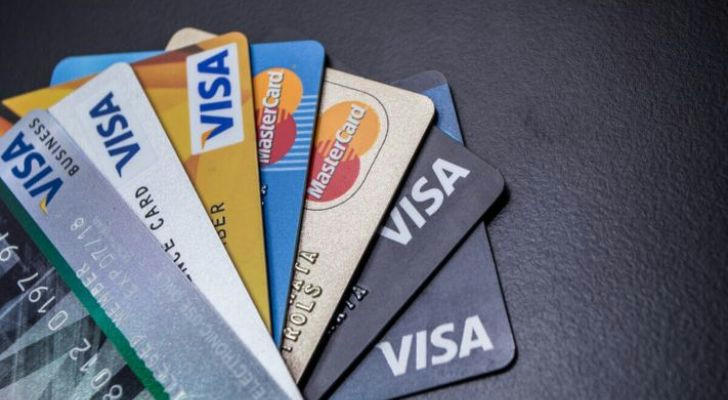A Complete Guide To Using Credit Cards

Credit cards have become an important part of modern life. Whether used for shopping, paying bills, or as emergency funds, credit cards can provide a lot of convenience for our financial management. However, when choosing and applying for credit cards, many people do not know much about the types of credit cards, application procedures, and related regulations. This article will analyze the application methods, types of credit cards, and the data support behind them in detail to help you make wise decisions.
Different types of credit cards
There are many types of credit cards, and banks have launched various cards for different consumer needs and user groups. Here are some common types of credit cards:
Standard credit card
A standard credit card is the most basic type of credit card and is suitable for most people. It provides a standard credit limit, suitable for daily shopping and paying bills. Usually, this type of card does not have too many additional benefits and privileges.
Gold/Platinum Card
Gold and platinum cards are high-end credit cards, usually requiring a higher annual income level. Cardholders can enjoy higher credit limits, more points rewards and some exclusive services, such as airport VIP lounges, exclusive customer service, etc.
Student credit card
This type of card is designed for students, usually with lower credit limits and more relaxed requirements. It helps students build a credit history and helps accumulate credit records in the future. Student credit cards usually come with promotions and shopping discounts.
Business travel credit card
Business travel credit cards are designed for users who travel frequently for business or travel. It provides related benefits such as hotel and flight reservations, and can earn points rewards based on consumption, which can be exchanged for travel-related services and goods.
Rewards credit cards
Rewards credit cards mainly provide rewards to cardholders through consumption points, cash back, etc. These cards are usually suitable for people who shop frequently or spend a lot of money. Points can be used to redeem goods, services or discounts.
Co-branded credit cards
Co-branded credit cards are usually issued jointly by banks and brands or merchants. Cardholders can enjoy discounts or points at designated merchants. These credit cards are generally customized for specific user groups.
Credit card application process
Select a bank and credit card products
First, users need to choose a bank of their choice and understand the different credit card products offered by the bank. Compare the annual fees, credit limits, interest rates and additional benefits of each card.
Prepare application materials
Generally, you need to submit proof of identity, proof of income (such as payroll or tax bills), proof of residence (such as utility bills), etc. Different banks may have different requirements, so you need to understand the specific requirements of the bank before submitting your application.
Fill out the application form
You can fill out the credit card application form through the bank's official website, mobile application, or at a bank branch. Some banks also provide online customer service to assist in filling out the form.
Wait for approval
After receiving the application, the bank will review the information. Usually, the approval time is 3 to 5 working days, and some banks may provide accelerated approval channels.
Credit card issuance
After approval, the bank will mail the credit card to the applicant's address or provide offline collection services.
Activate the credit card
After receiving the credit card, you need to activate it according to the bank's instructions. Activation can usually be done through online banking, telephone or ATM machine.

What should I refer to when applying for a credit card?
Official websites of credit card companies and issuing banks
Major credit card companies (such as VISA, MasterCard, American Express) and banks (such as Chase and Bank of America in the United States, HSBC and Barclays in the United Kingdom) provide detailed credit card application information, including credit card types, application conditions, fee structure, etc.
Credit scoring agencies (such as FICO, Experian, Equifax, TransUnion)
In the United States, FICO scores are an important indicator of personal credit status, and many credit card applications refer to FICO scores.
In other countries, there are similar credit scoring agencies, such as Experian and Equifax, and the credit reports and data provided are crucial for credit card applications.
Government agencies and financial regulators
Financial regulators in various countries, such as the Consumer Financial Protection Bureau (CFPB) in the United States and the Financial Conduct Authority (FCA) in the United Kingdom, provide information on credit card laws and regulations, consumer rights protection, etc.
Case Study
Mr. Li is a project manager of a company with a stable annual income and a good credit record. He applied for a travel credit card on the bank's official website and provided the necessary personal information and proof of income. After reviewing the application, the bank confirmed that he met the application requirements and approved the credit card with an appropriate credit limit. Mr. Li successfully obtained the credit card and began to enjoy travel-related discounts and points benefits.
conclusion
Credit cards are a flexible and convenient payment tool, but in the process of application and use, you need to carefully understand its types, application conditions, and related fees and benefits. By choosing the type of credit card that suits you and using it properly, you can help you manage your personal finances and enjoy various consumer discounts and rewards.

